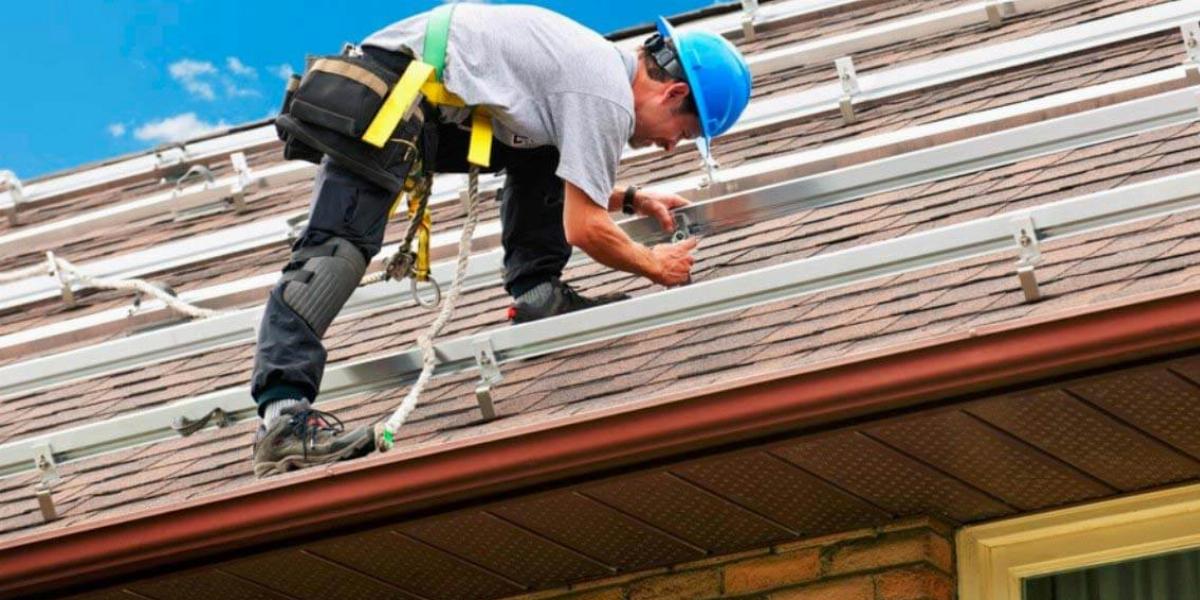
While we do not recommend trying out DIY roof repairs at any cost, there is always someone who wants to try it out. And if you are trying to do DIY roof repairs, it’s important that you do it right. Every year, hundreds of accidents happen around the states while repairing roofs. And while not all of these are from DIY repairs, it doesn’t take anything away from roof safety. And even if you are not performing DIY repairs and hiring a company, it’s important to understand what safety measures need to be followed. This can help you question the company if they are not following proper safety measures and, more importantly, avoid any accidents on your property.
Fall Hazards: Falls from roofs are one of the most common accidents during roofing jobs. And it’s not just a fall from the roof that can lead to an accident. Climbing up and down a ladder to get on and off the roof is also a time when people have taken some nasty falls.
There are various ways in which you can avoid falling off a roof or taking a tumble down the ladder. Wearing the right shoes is one way. Ensure you have a good grip and are not wearing slippery shoes. You should also avoid working on a roof during wet weather conditions as this can make the roof’s surface very slippery. Another way to prevent falls is using some form of fall protection gear like safety lines and harnesses. This is something that most professional roofing companies will do as mandated by law in many states. But even with all these safety measures, accidents can still happen. If you are hiring a company to work on your roof, ensure they have insurance in case anyone gets hurt while working on your property.
Power tool hazards: Power tools are commonly used during roofing jobs and can pose a serious hazard if not used properly. Every year, countless accidents occur because of power tools. The most common ones are people getting hit by flying debris or nails.
The best way to avoid these kinds of accidents is by ensuring that you use the right power tool for the job. Read the instruction manual before using any power tool and ensure you understand how it works. You should also wear safety gear like goggles and gloves to protect yourself from debris. And always be aware of your surroundings when using power tools.

Working with sharp objects: Roofing involves working with many sharp objects like knives, saws, and scissors. And it’s very easy to get cut while working with these objects.
The best way to avoid getting cut is by being careful. Always handle sharp objects with care and never try to rush through a job. It’s also a good idea to wear gloves when working with sharp objects. And if you do happen to get cut, make sure that you clean the wound immediately and seek medical attention if necessary.
Electricity: This goes hand-in-hand with power tools. If you are using power tools, you risk coming into contact with live electrical wires. This can lead to serious injuries or even death.
The best way to avoid getting electrocuted is by being aware of your surroundings. If you see any exposed wires, do not touch them. Also, make sure you use power tools that are properly grounded and have GFCI protection. And always wear rubber-soled shoes when working around electricity.
Hazardous substances: Roofing jobs often involve using hazardous substances like asbestos and lead. If not properly handled, these substances can cause serious health problems.
The best way to avoid getting sick from these substances is by wearing the proper safety gear. This includes a respirator, gloves, and goggles. You should also make sure that you are working in a well-ventilated area. And if you do come into contact with these substances, ensure you wash your hands and clothes immediately.
Extreme Temperatures: Roofing jobs can be very physically demanding. And working in extreme temperatures can make it even more difficult. People have suffered from heat stroke and frostbite while working on roofs. The best way to avoid getting sick from extreme temperatures is by dressing appropriately. This means wearing light, loose-fitting clothing in hot weather and layered clothing in cold weather. You should also take breaks often to stay hydrated and rest in a cool or shady area. And if you start to feel sick, make sure that you seek medical attention immediately.
While prevention is the best way to go when it comes to roofing accidents, it’s not always going to work. Accidents will happen even if you follow all the safety precautions mentioned above. This is why it’s always important to have insurance beforehand, scout for potential locations of emergency exits, and have a first-aid kit handy. In an accident, the most important thing is to stay calm and call for help immediately. Do not try to move the injured person unless it’s necessary. And if you are trapped, do not panic and wait for help to arrive.


